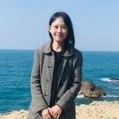Esoteric Buddhism in East Asia: Texts and Rituals
A special issue of Religions (ISSN 2077-1444). This special issue belongs to the section "Religions and Theologies".
Deadline for manuscript submissions: closed (31 March 2023) | Viewed by 5881
Special Issue Editor
Special Issue Information
Dear Colleagues,
We would like to draw your attention to this Special Issue, "Esoteric Buddhism in East Asia: Texts and Rituals”, to be published by Religions (https://www.mdpi.com/journal/religions/special_issues/east_asian_religions). This Special Issue aims to explore how Esoteric Buddhism influenced the indigenous religions and cultures in East Asian countries through various disciplines. Esoteric Buddhism developed in India from the fourth to the twelfth centuries, which was a period that lasted from the establishment of the Gupta dynasty to the domination of Islam in northern and northeastern India. Particularly during the eighth through tenth centuries, Esoteric Buddhism became a movement that influenced the southern, eastern, and southeastern regions of Asia and permeated the religions as well as cultures of these regions. This Special Issue explores how Esoteric Buddhism has affected local religions and cultures in different parts of Asia, and re-examines the influences of Esoteric Buddhist movements from the aspects of material culture, scriptures, and rituals in order to think more broadly about the religious impacts of cross-cultural Buddhist movements across borders between East Asian countries.
Contributors are invited to add to the topic by presenting case studies addressing any form of Esoteric Buddhism in China, Japan, Korea, or India and Tibet while relevant, between the medieval period and the present day. Research papers may focus on, but are not limited to, the following topics:
- Textual analysis of Esoteric Buddhist manuals;
- Rituals and performances in Esoteric Buddhism;
- Images and paintings related to Esoteric Buddhism;
- The relationship between iconography and textuality in Esoteric Buddhist culture;
- Monastic practices derived from Esoteric rituals or texts;
- Material culture and objects harnessed by Esoteric Buddhism;
- Doctrinal evolution in Esoteric Buddhism;
- Historical analysis of the trajectories of Esoteric Buddhist traditions;
- Local and transnational transmission and transformation of Esoteric Buddhism.
We welcome contributions in English with a recommended length of 8,000–10,000 words. The deadline for articles is 15 December 2022. Proposals must include a title, an abstract of up to 500 words, and a short biography of approx. 200 words, and should be submitted to the Guest Editor, Dr. Pei-ying Lin (bibo825@gmail.com), by 15 August 2022. All manuscripts should be submitted and formatted according to the Religions Instructions for Authors for peer review.
I look forward to receiving your contributions.
Dr. Peiying Lin
Guest Editor
Manuscript Submission Information
Manuscripts should be submitted online at www.mdpi.com by registering and logging in to this website. Once you are registered, click here to go to the submission form. Manuscripts can be submitted until the deadline. All submissions that pass pre-check are peer-reviewed. Accepted papers will be published continuously in the journal (as soon as accepted) and will be listed together on the special issue website. Research articles, review articles as well as short communications are invited. For planned papers, a title and short abstract (about 100 words) can be sent to the Editorial Office for announcement on this website.
Submitted manuscripts should not have been published previously, nor be under consideration for publication elsewhere (except conference proceedings papers). All manuscripts are thoroughly refereed through a double-blind peer-review process. A guide for authors and other relevant information for submission of manuscripts is available on the Instructions for Authors page. Religions is an international peer-reviewed open access monthly journal published by MDPI.
Please visit the Instructions for Authors page before submitting a manuscript. The Article Processing Charge (APC) for publication in this open access journal is 1800 CHF (Swiss Francs). Submitted papers should be well formatted and use good English. Authors may use MDPI's English editing service prior to publication or during author revisions.
Keywords
- esoteric Buddhism
- esoteric rituals
- Buddhist iconography
- Buddhist manuscripts
- East Asian Buddhism





